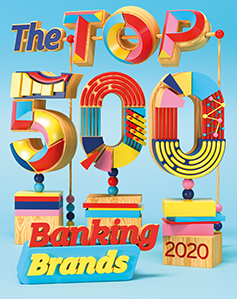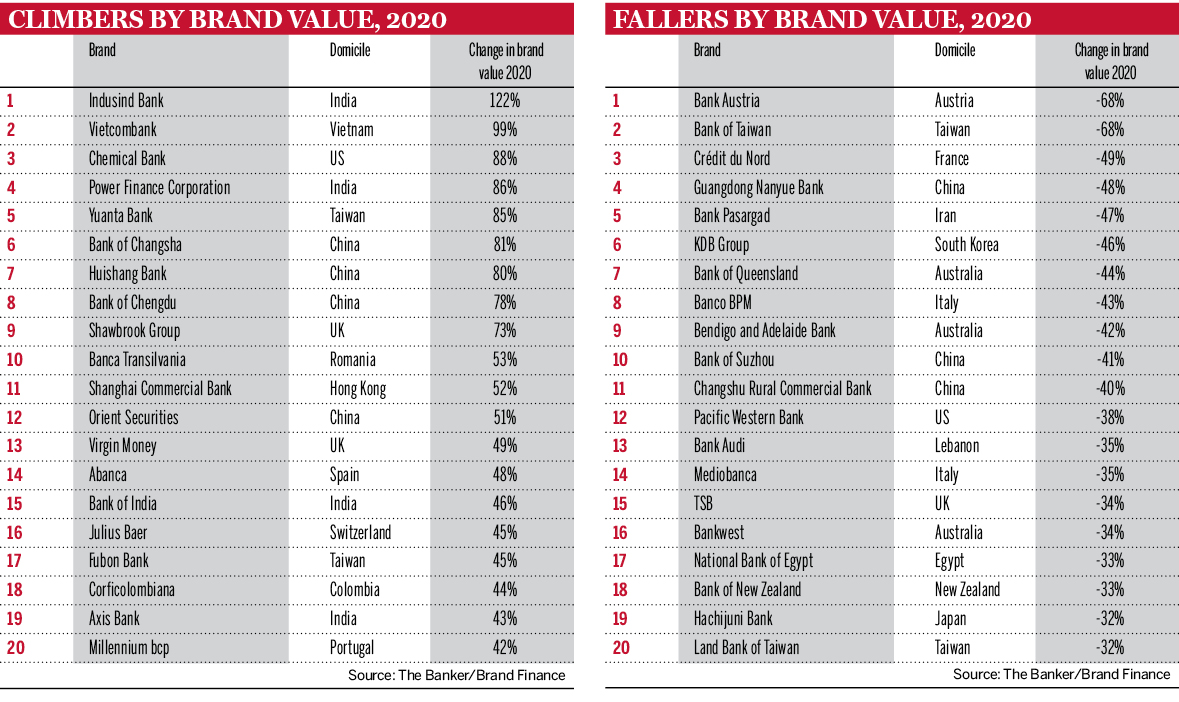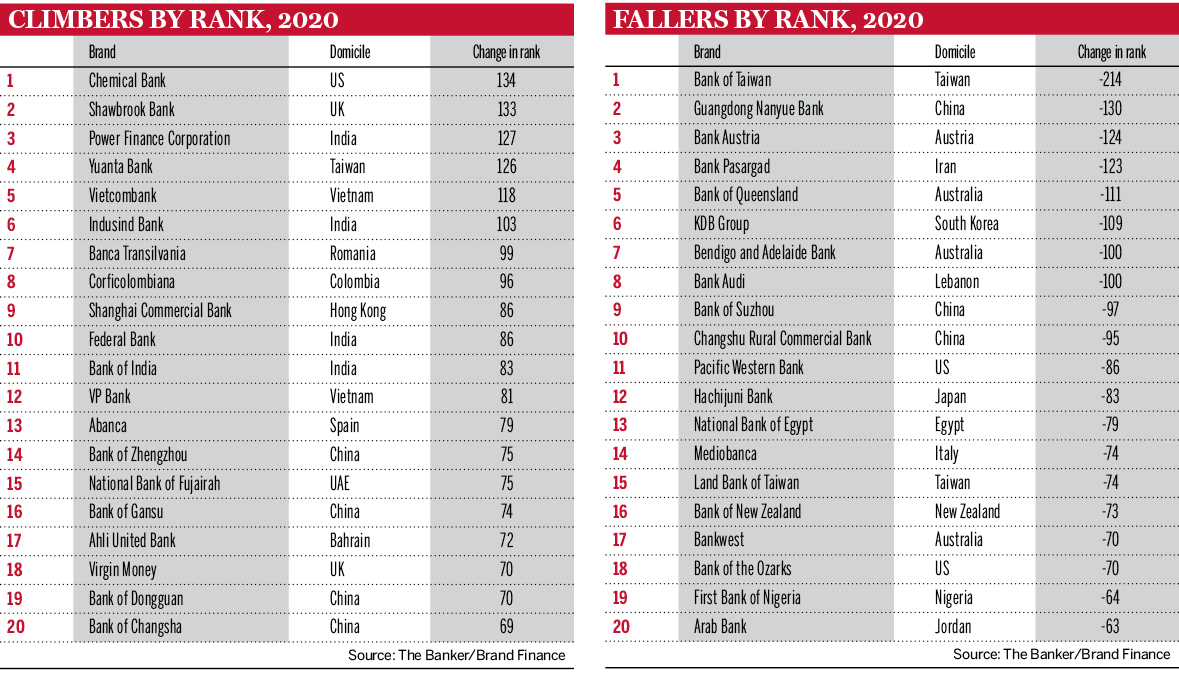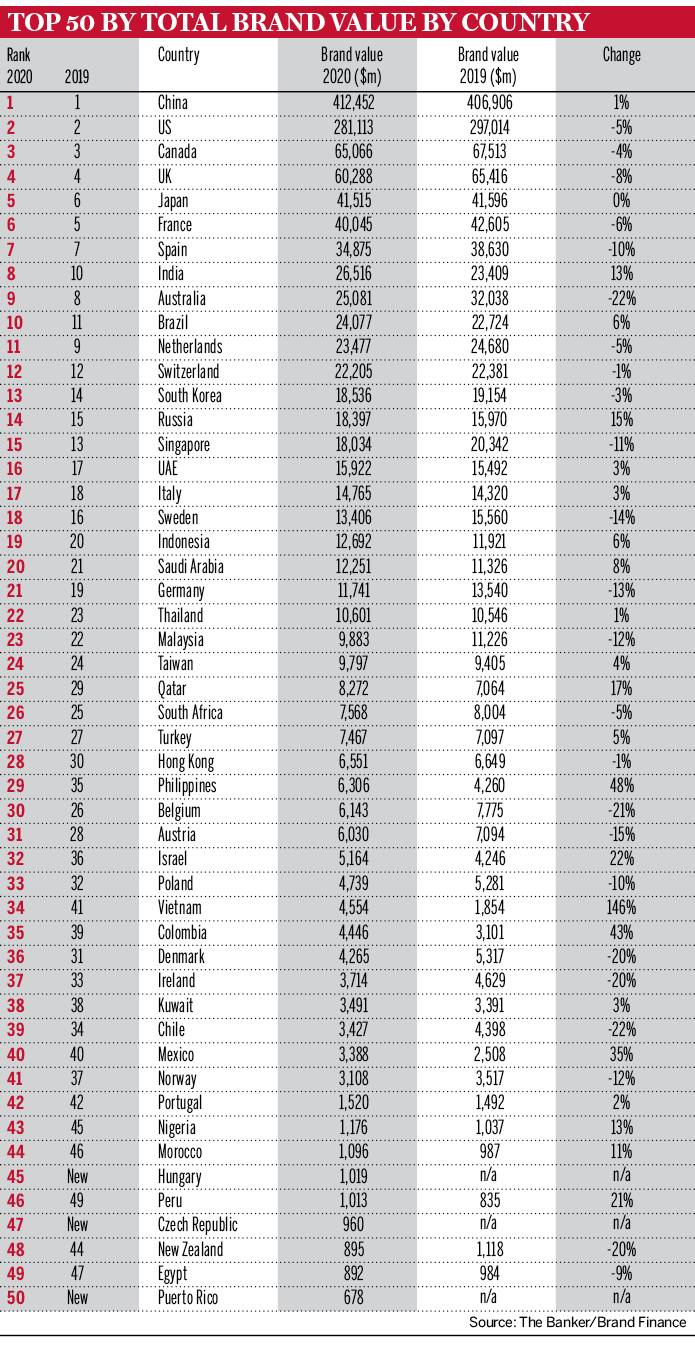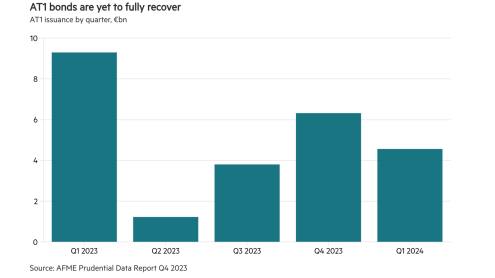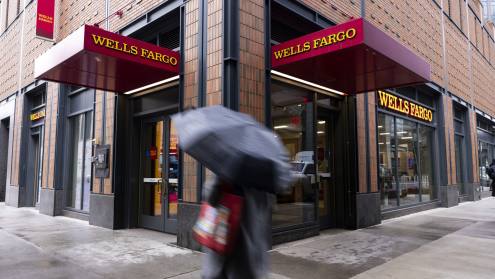For the first time since the aftermath of global financial crisis, the aggregate value of The Banker’s Top 500 Banking Brands ranking has contracted, albeit by just over 2%. However, this is quite a reversal in fortune compared with the double-digit growth seen in recent years.
This result can be mainly attributed to bearish analyst sentiment regarding the global economy, according to David Haigh, CEO of consultant Brand Finance, which conducts the research for the ranking. A key element in the brand valuation (see Methodology) is earnings projections – and bank analysts have been consistently making downward revisions to estimates. “The fundamental numbers that our evaluations are based on have been declining; however, our research shows that people trust banks, unlike following the financial crisis,” says Mr Haigh.
The total global brand value of the Top 500 stands at $1327bn. Regionally, Europe has seen the biggest drop in banking brand value year on year, down 7.1%, followed by Africa (-6.8%) and North America (-5.3%). Asia-Pacific, once the driving force of growth, has also seen a slight decrease of 1.3%. Central and south America, on the other hand, has boosted brand value by 7.2% and the Middle East has seen a 3.2% rise.
China slows down
For the fourth year in a row, China leads the top 50 countries league table. However, Chinese banks’ aggregate brand value grew by just 1%, compared with 28% in 2019 and 22% in 2018. Despite the slowdown, the country managed to add another brand to the Top 500 list in 2020, bringing its total to 49 banks, and more than half of the Chinese banks in the ranking increased their brand value in the past year.
In second place, and with 75 banks in the ranking (six fewer than in 2019), the US experienced a 5% contraction in aggregate brand value. Canada and the UK maintain their third and fourth positions, notwithstanding contractions in brand value. Japan has moved up to fifth spot despite stagnation, while France has dropped down to sixth place.
Australia has seen one of the largest declines (22%) in aggregate brand value, which is expected given its banking sector’s issues, including a Royal Commission into misconduct. All of its nine banks in the ranking have registered a drop in brand value and position.
Vietnam, on the other hand, has seen the biggest rise – 146% – in value among the top 50 countries and more than doubled its number of banks in the Top 500 list. “In 2018, the Vietnamese government announced a development strategy to strengthen the central bank and the banking industry, with higher and more stringent capital requirements; and there are more capital inflows to those banks. Our research shows that the banking industry’s reputation has improved 8% year on year,” says Declan Ahern, director at Brand Finance.
Global star: ICBC
China has not been shielded from the global maelstrom, prompting a turn from high-speed growth to high-quality growth, which has impacted its banks. “Due to factors such as a counter-cyclical adjustment to the national macro policy, China’s banking industry deepened the structural reform of the financial supply side, expanded the openness of the financial sector, and improved the modern financial system [to foster a] highly adaptive, competitive and inclusive [approach],” says a spokesperson from Industrial and Commercial Bank of China’s (ICBC’s) brand management department.
Despite these challenges, the Chinese megabanks – ICBC, China Construction Bank (CCB), Agricultural Bank of China (ABC) and Bank of China (BoC) – maintain their leading positions in the global ranking. But while the ICBC has increased its brand value by 1%, the other three have shrunk: CCB by 10%, and ABC and BoC by 1% apiece. The other Chinese brand in the top 10, China Merchants Bank, has expanded by just 2%.
Impressively, ICBC has retained its crown as the most powerful banking brand in the world for the fourth year in a row. In 2019, it carried out multiple marketing activities according to the bank’s brand management department. First, ICBC rolled out its 'top personal banking' campaign, tapping into the growth in the private banking business. Second, the bank upgraded its inclusive finance services and held the first micro and small business customer festival. It released a growth plan targeting 10,000 micro and small enterprises.
Third, ICBC began constructing a smart banking information system and held the first smart banking ecosystem event, ECOS, which stands for enterprise-level, customer-centric, open and smart. Fourth, the bank expanded the brand value by leveraging its events, festivals and popular social issues to “transmit business ideas, express its brand proposition, boost employees’ morale, and showcase the brand’s value and modernity”.
In the future, ICBC will continue its focus on user-oriented, innovation-led development and enhancing its smart banking ecosystem. “It will also cope with the trend of everyday finance and the internet-based industry, and endeavour to make financial services ‘everywhere’,” says the bank spokesperson. “ICBC will be adding energy to the economy and colours to its customers’ lives.”
Wells Fargo rebuilds trust
It is a mixed picture for the US banking industry, as the negative yield curve and possibility of a slowdown impacts bank margins, sentiment and so on. Less than half of the brands in the ranking have seen an increase in value. However, the country’s most valuable brand, Wells Fargo, enjoyed a 2% uptick, following a 9% drop in the 2019 rankings. It remains the only non-Chinese brand in the top five.
In 2019, Wells Fargo’s business focus was three-fold: continue to deliver customer experiences in every interaction and build trust; continue to be the best bank in terms of improving processes and operation controls; and increase efforts to become the easiest and most convenient bank. In line with these goals, the bank launched a new brand campaign: ‘This is Wells Fargo’.
“We featured both our employees and our technology because together they deliver an exceptional experience,” says Jamie Moldafsky, the bank’s chief marketing officer. “While most think about technology powering digital-first experiences, technology also empowers people and one of the great strengths of our brand globally is our people.”
Wells Fargo also launched a new brand identity. “We modernised the brand, making it digital first and digital friendly. For example, the stagecoach – an important part of our global brand recognition – has more movement and energy, while still embodying [a strong history], stability and security,” says Ms Moldafsky.
In 2020, Wells Fargo plans to double down on delivering “the easiest, most helpful, most personal solutions”, she adds. “In every interaction, we want the customer to feel known, well served and that we have their interests at heart – that is how we regain and build trust.”
One-company strategy
Bank of America (BofA) – the second largest US brand – has a slight fall in brand value of 4%, mainly attributable to macroeconomic challenges impacting earnings projections. It went through a rebranding exercise in 2019 to bring its brand strategy in line with CEO Brian Moynihan’s vision of 'one company', retiring several brands including US Trust and Bank of America Merrill Lynch. “Previously, we went to market with multiple logos and value propositions. This was an opportunity to reset the brand strategy to mirror the one-company strategy,” says Meredith Verdone, chief marketing officer at BofA.
“We focused on three imperatives: to modernise, simplify and humanise the brand,” she adds. “The new brand strategy has the elasticity to work across all of our clients and business lines, and across our geographical footprint.” The bank is active in 92 US markets and 40 countries, and serves a full client range, from retail through to large corporates.
The common thread, according to Ms Verdone, is the bank’s role in helping customers achieve their goals. “We evolved this notion of asking the question ‘What would you like the power to do?’. It is not just an advertising campaign – it is the first question asked when a person walks into one of our financial centres to help uncover what the customer is trying to solve,” she says. “We are a brand that listens.”
With more than 200,000 employees interfacing with clients and communities every day, BofA is also focused on listening to its employees to better understand what they need to improve satisfaction. “We doubled down on being a great place to work and telling that story, something we hadn’t done in advertising before,” says Ms Verdone. For example, the bank committed to increasing the US minimum wage to $20 per hour in the first quarter of 2020. In addition, it has implemented 16 weeks of paid paternity leave.
The bank has performed well in Brand Finance’s research, Mr Ahern reports. “BofA’s reputation and trust measures are increasing year on year, and there is a general view that the bank is providing better value for money compared with last year,” he says.
JPMorgan enters top 10
Twenty-twenty is the first year that there is no European bank among the top 10 of the Top 500 Banking Brands ranking. HSBC has been pushed out of this exclusive club and into 11th place by JPMorgan, which has seen a 15% jump in brand value. This can be mainly attributed to extensive business-to-business (B2B) research conducted by Brand Finance for the first time, in addition to strong financials. “JPMorgan performed well in our B2B research and is highly respected and reputable in the B2B market,” says Mr Ahern.
Leanne Fremar, chief brand officer for JPMorgan Chase, says: “Our reputation is driven by delivering excellent client service. Every day our employees are looking at ways to serve our clients better, faster and smarter to help them achieve their goals. When our business does well, our brand does well.”
In 2019, the bank continued to look for ways to best deliver the expertise across its businesses to its clients, according to Ms Fremar. “A few highlights include our annual eTrading Survey, our new ‘Story of Trading’ campaign showcasing the evolution of trading technology, and the launch of our Tech Trends and Market Trends podcasts. We also created new partnerships such as CNBC Solve It, which explored the impact of current events on investor behaviours,” she says.
TD on top in Canada
Overall, Canadian banks have had a disappointing past 12 months, resulting in only three of its 10 brands in the 2020 ranking seeing an uptick in brand value. However, this has led to a shake-up at the top, as TD’s brand value increased by 15%, moving it up four spots to 13th globally and leapfrogging domestic competitor RBC to become the country’s most powerful banking brand.
In 2017 TD changed its tagline to 'Ready for you' – after 17 years of 'Banking can be this comfortable' – to help Canadians gain confidence in their financial health. “The change was based on the insight that 79% of Canadians don’t feel confident about their financial future; something that, as a leading bank, we felt we could help change,” says Theresa McLaughlin, global chief marketing, citizenship and customer experience officer at TD Bank Group. “This began our journey to evolve our brand to help our customers navigate an increasingly complex world.”
The bank has made several investments to back up the rebrand, such as in using modern artificial intelligence for its chatbot, TD Clari, which accelerates the delivery of real-time answers to everyday financial questions, and TD GoalAssist, which provides insights and online investment advice for Canadians.
Ms McLaughlin outlines TD’s commitment to be a purpose-driven brand. “While this has always been in our DNA, in 2019 we provided C$126m [$96.4m] to community organisations the ‘TD Ready Commitment’, our corporate citizenship platform, with a target of giving C$1bn by 2030,” she says. “Research shows that consumers want to work with a company that does well and does good in the community.”
Today’s marketers wear more hats than ever before, according to Ms McLaughlin, taking on roles such as data analysts, digital experts, cultural advocates, strategists and so on. To upskill the marketing team and help it understand modern digital marketing, TD has developed a learning programme called DMIQ, which is now being rolled out to other areas of the bank. “It shows how we use partnership platforms and our own platform to talk to our customers in relevant ways and anticipate their needs,” says Ms McLaughlin. “TD has been known for a terrific customer experience in person and on the phone, and this will help us translate this into the digital world.”
Another tough year in Europe
Predictably, it has been another tough year for European banking brands. Thirteen of the 24 countries in the top 50 list that experienced contractions in aggregate brand valuation are European. Belgium, Denmark and Ireland have seen their aggregate brand valuation drop by at least 20%, while Austria, Sweden, Germany, Norway, Poland and Spain have experienced drops of at least 10%. And, despite adding five new banks to the ranking, Switzerland has experienced a 1% drop in total brand value, mainly because its two biggest brands – UBS and Credit Suisse – have suffered contractions.
Italy, Portugal, Turkey and Russia bucked the downward trend, with the latter seeing a 15% growth in brand value. Russia’s second largest brand, VTB Bank, has grown its value by 32%. Italy’s two biggest brands – Intesa Sanpaolo and UniCredit – have increased their brand value by 19% and 13%, respectively.
In a challenging environment, with enduring uncertainty around Brexit, it is not surprising that only one of the top four UK banks – Lloyds Bank – has managed to increase brand value over the past 12 months, by just 3%. HSBC and Barclays have seen a contraction of 4% and 8%, respectively, while NatWest has dropped by 23%, pushing it down 14 places and out of the top 50 globally. However, two of the UK challenger banks – Shawbrook Bank and Virgin Money – have made impressive gains.
Shawbrook grows influence
Shawbrook Bank, a small and medium-sized enterprise (SME) specialist lender, is second in the table of top 20 climbers by rank, moving up 133 places to 366th. It has added 73% to its brand value, which earns it a spot in the top 20 climbers by brand value table.
The bank, launched in 2011, has reaped the benefits of a brand refresh in 2018. Richard Armstrong, chief marketing officer at Shawbrook Bank, says success can be attributed to a return to the bank’s roots. “We are a specialist bank for SMEs. We decided to shrink our product portfolio and move out of the more vanilla markets,” he adds.
Shawbrook’s best brand campaign started off as an internal campaign, according to Mr Armstrong, featuring quotes from staff, talking about who they are and what they do. “We did a bit of word play with imagery of what they do in their spare time,” he explains. One example is 'Specialists dive deeper', with an image of a technical cave diver. “We are illustrating that deep relationships, sector knowledge and attention to detail is what enables us to deal with complex scenarios,” adds Mr Armstrong.
The bank’s marketing plan for 2020 is to be “much louder” with more brand promotion activity, both digitally and in trade publications. It will also continue producing reports for specific industries, such as buy-to-let and commercial property. “We are using our insights to position ourselves as industry experts,” says Mr Armstrong.
Virgin Money's winning brand
Virgin Money is the other UK challenger success story, adding 49% to its brand value and moving up 70 places to 232nd spot, joining Shawbrook in the top climber tables. Following its acquisition by CYBG, which housed Clydesdale Bank, Yorkshire Bank and B, in 2018, the group was rebranded as Virgin Money in October 2019.
The rebranding campaign was centred on bringing together “the well-trusted full-service personal and business bank, which had been around for 185 years between the Clydesdale and Yorkshire banks, with the entrepreneurial spirit of Virgin and Virgin Money, to create something unique for the UK consumer,” says Helen Page, group brand and marketing director at Virgin Money.
The bank’s vision is to disrupt the status quo in the UK. “Consumers don’t talk about banking; they talk about their money,” says Ms Page. “As we have ‘money’ in the title Virgin Money, we are already differentiated from other banks. In July, we launched a new identity and asked consumers to ‘Say hello to brighter money’, our new positioning.”
The bank has also rebranded its three largest stores – London, Manchester and Birmingham – from B to Virgin Money. These are spaces where people can work, grab a coffee, do yoga, attend music gigs or an event about starting a business, according to Ms Page. “You don’t have to bank with us – but those that use the space to co-work usually transfer their banking business to us within a couple of visits,” she says. The bank plans to roll out this concept at 20 key UK locations in 2020.
Ms Page reports learning from other Virgin Group companies. “We spent a lot of time in 2019 building relationships with Virgin Group companies and partners and learning about how they engage consumers, particularly the new ones such as Virgin Voyages and Virgin Hotels, who have a fresh approach,” she says.
Ms Page's ambition is to create the UK’s most loved consumer brand. She says: “People are looking for a brand that cares, is engaging and supports loyal customers, which is why we are working with the Virgin Group to build what we believe will be the biggest consumer-led loyalty offering in the UK.”
Brand Finance’s Mr Haigh says: “This shows that a brand that appeals to the younger generation and is known for innovation and customer service can beat traditional brands. It is like a reverse takeover – Virgin Money was one-third of the size of the combined group and yet it is the brand that came out on top.”
Methodology 2020
Brand Finance employs a discounted cashflow technique to discount estimated future royalties at an appropriate rate to arrive at a net present value of a bank’s trademark and associated intellectual property – its brand value.
The steps in this process are to:
1. Obtain brand-specific financial and revenue data. The revenue is then segmented into the following revenue streams: retail banking, wholesale/commercial banking, investment banking, asset/wealth management, Islamic banking and credit cards. This segmentation is based upon annual reports.
2. Model the market to identify market demand and the position of individual banks in the context of all other market competitors.
Three forecast periods were used:
• If not yet reported, then financial results for 2019 were estimated using the Institutional Brokers Estimate System (IBES) consensus forecast.
• An explicit forecast period, from base year 2019 up to 2024. This was determined using three sources: IBES, historic growth and gross domestic product (GDP) growth supplied by the International Monetary Fund.
• Perpetuity growth based on a combination of growth expectations (GDP and IBES).
3. Establish the royalty rate for each bank by:
• Calculating brand strength on a scale of zero to 100 according to a number of attributes, including asset strength, emotional connection, market share and profitability.
• Determining the royalty rate for each revenue stream mentioned in step one.
• Calculating the future royalty income stream.
4. Calculate the discount rate specific to each bank, taking account of its size, geographical presence, reputation, gearing and brand rating (see below).
5. Discount future royalty stream (explicit forecast and perpetuity periods) to a net present value – the brand value.
Royalty relief approach
Brand Finance uses a ‘relief from royalty’ methodology that determines the value of the brand in relation to the royalty rate that would be payable for its use were it owned by a third party. The royalty rate is applied to future revenue to determine an earnings stream that is attributable to the brand. The brand earnings stream is then discounted back to a net present value. This approach is used for two reasons: it is favoured by tax authorities and the courts because it calculates brand values by reference to documented third-party transactions; and it can be done based on publicly available financial information.
Brand ratings
These are calculated using Brand Finance’s Brand Strength Index, which benchmarks the strength, risk and potential of a brand relative to its competitors, on a scale from AAA to D. Conceptually it is similar to a credit rating. The data used to calculate the ratings comes from various sources including Bloomberg annual reports and Brand Finance research.
Brand ratings definitions
AAA – Extremely strong
AA – Very strong
A – Strong
BBB-B – Average
CCC-C – Weak
DDD-D – Failing
Valuation date: All brand values in the report are for the year ending December 31, 2019.



